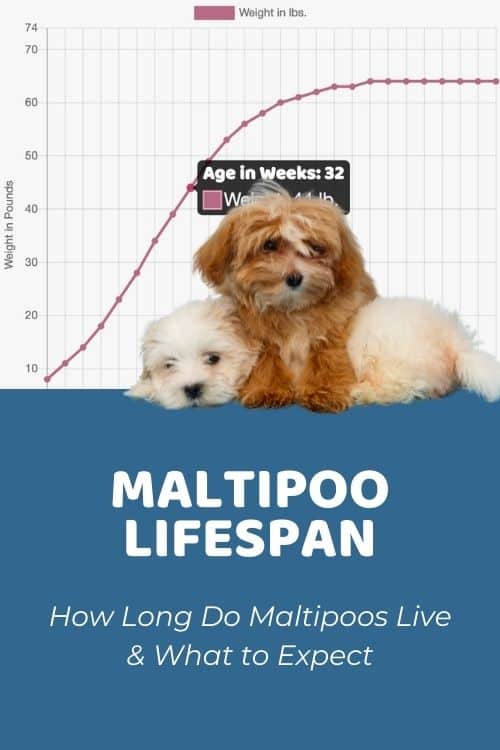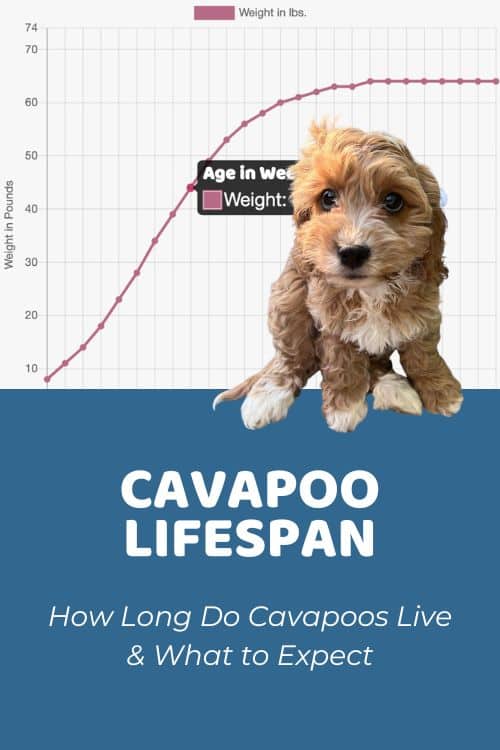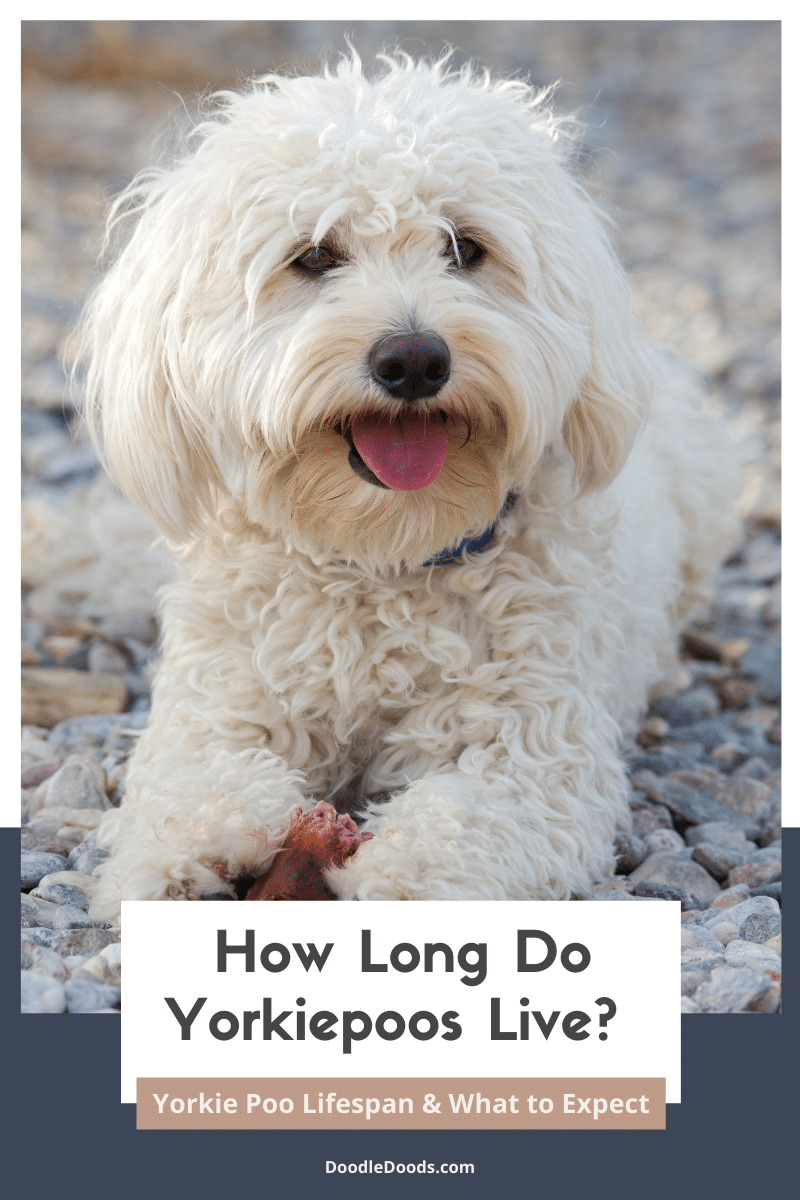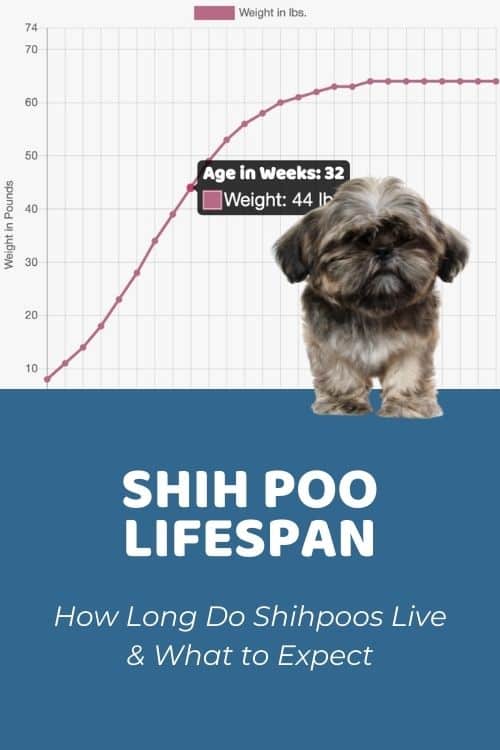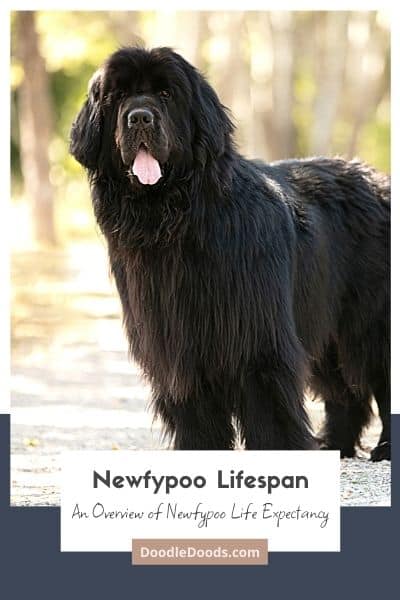When it comes to pet ownership, one of the saddest realities to face up to is that one day they may not be with you anymore. While this shouldn’t put you off adopting a puppy in the first place, you do need to be aware of how long your dog is likely to live, as well as the various health conditions that put them at risk of an early death.
Here we will take a specific look at Maltipoo lifespan, life stages, and health issues. We will also consider various practical ways for you to give your pal the very best chance at a happier, healthier, and longer life with you and your family.
Maltipoo Lifespan
Maltipoos are an adorable combination of the sassy Poodle and the super cute Maltese. With their soft gorgeous coats, loving, loyal nature, and some serious canine smarts, they make perfect family pets. These diminutive Doodles are highly adaptable little darlings, and, for this reason, they are especially well suited to apartment living.
The excellent news for Maltipoo owners is that smaller dogs like these tend to outlive larger ones. If you’re lucky, you will be able to enjoy between 12 and 16 glorious years with your fab friend. In fact, it isn’t unheard of for these fortunate canines to last even longer than that with the proper care and attention.
Given that, within the wider animal kingdom, larger animals usually fare better than smaller ones in terms of longevity (consider the elephant’s 65-year lifespan to the mouse’s measly 5 year one), it’s a little surprising that smaller dogs do better here. While the reason for this isn’t wholly understood, canine experts have a few theories about why this might be the case. The leading one is that larger dogs both grow and age faster than their teenier cousins.
Individual Differences
Even within the ‘breed’ itself, there have found to be variations in how long dogs live. The key one is likewise related to size. Maltipoos come in two distinct types: Toy and Mini based on the Poodle used in the breeding (Miniature or Toy). As you might expect, given the above information, Toys, as the smaller ones, do slightly better than Minis.
There are also gender differences here. Female pups tend to live a little bit longer than male ones. The difference here can be as much as a year and a half. This isn’t shocking news given that this tends to be the case with most animal species – including humans, of course.
Aside from this, you can also learn a lot about your pooch’s specific expected lifespan from the facility you purchased them from. If you got them from a responsible breeder, your dog will likely be in excellent health, and you will be able to ask all about their family history. Get as much information about this as you can, and it will stand you in good stead for knowing precisely what to expect for your dog.
Life Stages of a Maltipoo
According to the pros, the notion that dogs age seven years for every one of ours is seriously outdated. As covered above, pups age at different rates depending on their size – for one. They also age faster or slower at different stages of their lives. We know this because of studies done on the way their DNA changes over time.
- According to this new research, small dogs like Maltipoos can be classified as puppies only up until the age of 3 months. At this stage, they would have matured enough to be able to leave their mothers and should be doing pretty well by themselves. Early training and socialization should be well underway. Your Maltipoo will be somewhere between a third and a half of their adult size already.
- At around 6 months, your Malti will reach the adolescent period. They will likely have completed teething, will have their adult coat, and will probably be close to their mature height (but not yet their full weight). At this age, you need to start being aware that your female could come into heat at any time. You need to be thinking of getting your pup (either male or female) spayed.
- Between 7.5 and 13 months, depending on whether your puppy is a Mini or Toy, they will reach young adulthood. They will be at their full size at this time, although they may act like the puppy they think they still are. At this stage, you need to think about switching out the food you are currently using for an adult formula. These ones have fewer calories and more of the nutrients required by an adult dog.
- At 3 years of age, your Maltipoo will be more mature. The results of their early training and socialization will be evident now. As an adult dog, your pal may still be just as playful and energetic as when they were a puppy but a little less excitable and a little more controlled in their behavior. As the years go on, you may start to notice a slight decline in their exercise needs as they approach the final stage…
- Dogs might be considered seniors from around 8 to 10 years of age. This will obviously depend on their individual health and wellbeing. If they are well maintained, you might not notice any signs of decline until they reach double digits. In this period of their lives, most dogs will require more veterinary care. You will also need to begin rethinking their diet and exercise routines, among other things.
Common Maltipoo Health Problems
Every kind of dog is susceptible to certain health conditions that are common to their breed. This is because many of them are hereditary and so passed on from parent to puppy. While the Doodle has two distinct breeds to consider, their “hybrid vigor” actually makes them less likely to develop these kinds of problems. Basically, their more diverse genes water genetic issues down.
However, less likely is not the same as completely unlikely. Doodles are still at risk from common canine conditions. Just perhaps not as much as pedigree dogs are. From the (smaller) Poodle, there are issues with neurological disorders and cancer. The Maltese, however, is likely to have more problems with their heart than their head. Although this breed also has issues with cancer.
You should also take care to watch for any signs of white shaker syndrome, a stress-related condition common in smaller, white dogs; epilepsy; patellar luxation, a leg condition small dogs can suffer from; portosystemic shunt (PSS) and Legg-Calve-Perthes Disease, which are both to do with abnormal blood flow; and the eye problem progressive retinal atrophy (PRA).
However, far and away the biggest danger for Maltipoos, as with most smaller pups, is trauma. This includes being dropped, stepped on, or otherwise accidentally injured by people or other animals. Children especially don’t always understand how fragile these little Doods are. That’s why you need to make sure your kids are clear on just how to handle your Malti (it’s generally better if they don’t pick them up), and you should always carefully supervise their play.
Maltipoo Signs of Aging
As covered above, one of the main ways you might know your pup is starting to slow down a bit is that they start to do just that – slow down a bit. They simply may not be quite as eager to participate in lengthy or overly frequent walks and games as they once were in their younger years.
The American Kennel Club (AKC) has a few other recommendations for parents of aging pets to keep an eye out for. Physical signs include difficulty seeing, stinky breath, weakness in their back legs, lumps under the skin, weight changes, and toilet issues. Behavioral ones are increased or irregular sleep/walk patterns and reduced general activity levels.
They warn that canines can also suffer from a type of dementia that may leave them confused, anxious, and fearful. Any increased grumpiness or aggressive behaviors should be taken as a cue to visit the vet. Your pet could very well be in pain and might benefit from medication or changes to their diet that would better support their older joints and muscles.
Extending the Lifespan of a Maltipoo
There are many ways to ensure your Maltipoo’s continued excellent health right through their life. Purchasing your puppy from a responsible breeder where the parent animals were carefully tested for hereditary conditions is a great start. However, there are a few other things you can do. These include:
Feeding them a suitable diet for their life stage
As you might imagine, the kind of food your pet eats has a significant impact on their overall health. Balanced nutrition with all the right types of vitamins, minerals, and more is fundamental to a good, long life. You also want to take care that the food you opt for doesn’t contain an excess of unhealthy fillers or chemicals, as these can have a seriously detrimental effect on your pup’s health. Here are the kibbles we personally recommend for Maltipoos.
The amount you feed your dog is also crucial. Obesity is one of the leading causes of early dog death in the US. It increases the risk of chronic diseases like diabetes, orthopedic problems, and cancer. It’s such a big problem because owners often overestimate the amount of food their pet actually needs. Be sure to pay attention to the manufacturer’s instructions and carefully weigh the food each time as instructed. Keep in mind also that treats should constitute no more than 10% of your Malti’s daily calories.
Making sure they get plenty of exercise
The other side of the diet coin is, of course, exercise. Keeping your dog active is another excellent way to fight against obesity and its associated health risks. While Maltipoos don’t perhaps require as much exercise as the more giant Doodles out there, they still need at least one 30-minute walk. More’s the better – two short walks nicely spread across the day with games and fun thrown in the middle.
Many pet owners are actually unaware of how to gauge if their pup is overweight or not. One of the best ways to do this, aside from weighing your dog, of course, is to pay attention to their shape. They should have a clearly defined waist, you shouldn’t notice their stomach swinging overly much, and you should be able to feel their ribs without applying too much pressure.
Keeping them safe at all times
As already established, trauma is the most significant risk to your Maltipoo’s health. For this reason, it’s vital that you pay special attention to their environment. Beyond ensuring that they are handled with care, you need to protect your pooch from the elements when they are out walking. Malties don’t do particularly well with extreme temperatures in either direction. So, keep them out of the hot sun and well bundled up from the cold.
You also need to keep any outdoor space your pup frequently spends time in well secured. Keep fences in good repair and check for any holes and gaps that tiny bodies could all-too-easily squeeze through. When out and about, your Malti should be kept on the leash, especially when close to roads or anything else that could pose a threat to them. You should only be letting them loose in places you are confident they can’t escape from, such as dedicated (and well-maintained) doggy parks.
Quickly taking care of any health issues
Early vaccinations against viral and bacterial infections such as leptospirosis, parvovirus, distemper, and parasites will help to give your pup the best start in life. Spaying them surprisingly also seems to have an impact on their longevity. It does this by eliminating or reducing certain health conditions, including specific types of cancer. Neutered dogs also have far fewer behavioral issues that could also put them at risk of injury or worse.
Regular vet checkups, especially as your pet starts to get a little older, even when they aren’t sick, will help you to stay on top of their health. Vets will be able to spot any early signs of illness, disease, or degeneration with plenty of time to be able to do something about it. People often skip checkups with the aim of saving a bit of dosh – but doing this could end up costing you a lot more in the long run.
Regular brushing and other grooming activities
While most dog owners know that frequent brushing is important for keeping their pet’s coat in good condition (and this goes doubly for the tangle-prone Doodle), many don’t think of the impact grooming it has on their overall health. For instance, improved hygiene through ear and eye care reduces the risk of bacterial and yeast infections that could lead on to worse.
Moreover, having regular hands-on time with your dog enables you to more quickly spot any signs of injury, irregularities such as lumps and bumps, deformations, skin irritations, and parasite infestations that require urgent veterinary care. Early detection of many of these is absolutely vital for their successful treatment.
Frequently Asked Questions About the Lifespan of a Maltipoo
What is the average life span for a Maltipoo?
As smaller dogs, Maltipoos have a longer-than-canine-average life expectancy. When kept in the best of health, you can expect your Malti pup to reach the grand old age of 12-16 years and still be in relatively good condition. There are plenty of things that you, as the owner, can do to ensure that this is, in fact, the case, such as buying a high-quality food and keeping them away from things that might cause harm to them.
Which health issues do Maltipoos have?
While Maltipoos, as a mixed breed, might be considered healthier than most purebred dogs, they are still susceptible to some canine issues. These include neurological conditions, heart problems, and cancer. As smaller dogs, they can also suffer from problems with their lungs, joints, and blood flow (see above for more details on each of these). Regular vet checks are recommended throughout your pup’s life to ensure these can be spotted and treated early on.
Are Maltipoos generally healthy?
Most Maltipoos enjoy very good health. This is because breeders of these super Doods are working hard to make them as free from disease as possible. All parent pups are carefully screened for any genetic conditions that they might pass along to their offspring. So every succeeding generation of Doodles is stronger and more likely to last than the previous one. That’s why it’s essential to ensure you’re purchasing your pup from a reputable facility that is doing all of this and more.
What do Maltipoos usually die from?
The biggest hazard for Maltipoos, as with most toy, tiny and mini hounds, is trauma. Accidents can very easily happen with these delicate dogs. They might get dropped, stepped on, or worse. That’s why it’s vital to be incredibly careful around them and to make sure that your children know the best ways to handle and interact with them. If anything like this does occur, be sure to take your pal off to the vet as soon as you can, even if they don’t seem hurt at first. Injuries might not always be noticeable right away.
If you are thinking of adopting a gorgeous Maltipoo or are already lucky enough to own one of these fabulous dogs, you will be relieved to hear that they generally enjoy remarkably long, happy, and carefree lives. Paying close attention to their specific needs as they transverse each life stage and getting them regular veterinary care can further work towards guaranteeing that this is the case for your, no doubt, very much loved four-legged friend.
Learn How to Care for Your Doodle Puppy!

Perfect for first-time Doodle parents, get ALL your questions answered, including questions new Doodle parents don’t even think to ask.
Plus, get $700 worth of Bonus Materials for FREE, including:- Doodle Parenthood Community and Support Group ($190 value)
- Doodle Puppy Growth Tracker ($20 value)
- EMERGENCY Cheatsheet: When To Call The Vet Immediately ($50 value)
- HELP! Button ($145 value)
- And SO MUCH MORE!
The information on this page is for informational purposes only. It is not intended to be a substitute for qualified professional veterinary advice, diagnosis, or treatment. Always seek the advice of your veterinarian or other qualified animal health provider with any questions you may have.

